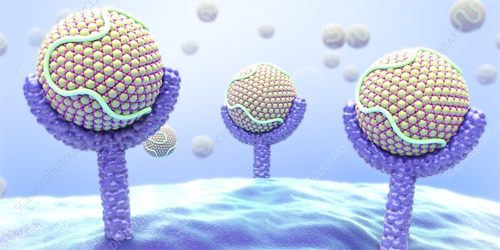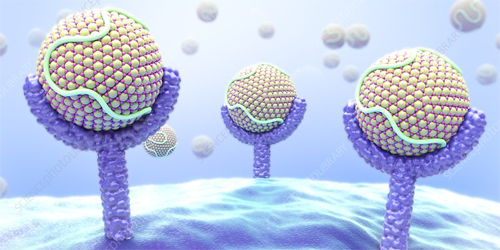A Biological Cell As a Chemical Sensor
Biological cells sense the chemistry of their environment by detecting certain molecules that bind to receptors on their surfaces. Conventionally, researchers have investigated this ability under the assumption that chemical concentrations are constant, but this assumption does not reflect the rapidly fluctuating environments typically found in biological systems. Now, Thierry Mora of Sorbonne University, France, and Ilya Nemenman of Emory University, Georgia, have developed a mathematical model to derive the fundamental limit to a cell’s sensitivity under more realistic conditions.
The researchers’ model describes a cell’s chemical environment in terms of a randomly changing numerical field—a formulation that allows them to apply techniques from field theory, which are usually used to solve problems in quantum and statistical physics. The model predicts the probability of a molecule binding to the cell within a given time period, enabling the researchers to derive the smallest fractional fluctuation of concentration detectable by the cell. As either the overall biochemical concentration or the receptors’ binding rate increase, the cell can sense smaller fractional fluctuations in concentration. While the conventional model of a cell in an idealized, constant environment predicts that this sensitivity is related to the concentration and the binding rate by a 1/2 power law, the new model has the sensitivity rising more slowly with the concentration and the binding rate, obeying a 1/4 power law.
The researchers applied the model to a common biological scenario in which environmental chemicals binding to a cell’s receptors drive a network of signals inside the cell. They found that the simulated cell’s ability to detect the molecule agreed with their derived fundamental limit. The team’s simplified framework could illuminate the dynamics of real biological systems, such as a microorganism moving through a complex microbial landscape or cells developing rapidly in a fruit fly embryo.
This research is published in Physical Review Letters.
–Sophia Chen
Sophia Chen is a freelance science writer based in Tucson, Arizona.





